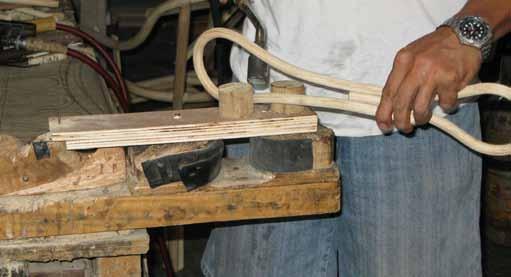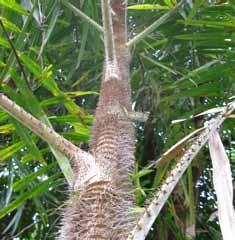
2 minute read
Harvesting
Findings The activities under this function include land preparation and clearing, digging, actual planting of seedlings, weeding and brushing, replanting of dead saplings, and protection of the plantation from fire, astray animals and humans encroaching into the land to gather firewood and other forest products.
Labor for planting and the subsequent maintenance work done by POs, generally for a 3-year period following planting, were paid for by the government as part of its commitment to POs, a concession given to them for agreeing to manage and protect the area covered by the CBFMA.
Advertisement
haRVESTIng This function pertains to tree felling and other auxiliary operations that will convert standing timber to logs, marking the starting point for the utilization of the wood from the tree for a variety of purposes. Fig. 3 shows the sequence of events and the detailed flow of materials during harvesting and the subsequent hauling of the wood to processors and lumber dealers.
Findings
Prior to the actual harvesting, the POs and tree farmers would engage in many other activities that do not necessarily add value to the plantation trees but nevertheless take up most of the POs’ and farmers’ time, resources and energy.
These activities include the conduct of inventory, filling out of numerous forms and/or preparation of written reports, tree registration for private tree plantation owners, and for POs, procuring the necessary resource utilization permits (RUPs). Later on, transport permits and other prescribed documents to comply with “legal” requirements prior to the conduct of harvesting operations would have to be secured as well, following tedious protocols and poorly understood rules and regulations. These rules and regulations are discussed in detail under the section “Legal and Regulatory Environment Affecting the Wood Value Chain” in the present report.
At the harvesting stage, bidding and negotiations starts. Once the RUP has been released, the PO could already theoretically negotiate and sell freely to the bidder that will give the highest value for their timber, provided they are legitimate buyers. In accordance with DENR regulations, buyers should be licensed dealers or wood processors. In reality, this is far from what is happening on the ground.
Cutting to flitches Cutting into flitches
figure 3. Timber harvesting operation in Leyte Island
Challenges encountered by People’s Organizations in dealing with buyers: 1. They have limited access to information as to the prevailing market prices for timber. 2. They are constrained to dealing with buyers who are recommended to them by the
CENRO, who “negotiates” with the buyer on behalf of the PO. 3. In the process of disposing their logs, some farmers also deal with “intermediaries” who are in the business of buying-and-selling timber. The process of transacting with potential buyers gets even more complicated when the local government unit, from the
Barangay up to the municipality, would impose additional rules that require the farmers to secure documents other than those already imposed by the DENR and to pay other fees or local taxes. 4. Finally, the deal to transact business between the PO and the buyer, if they are able to go this far, is sealed with a memorandum of agreement (MOA), which still needs
CENRO approval. Thus, before a single board foot of lumber reaches its final consumer, the farmer must have paid countless visits to the CENR Office, conferred with several DENR officers who may have varying or conflicting interpretation of rules and regulations, obtained the signatures of several government bureaucrats, and paid hundreds or even thousands of pesos in both legal and non-legal fees to consummate the process.





